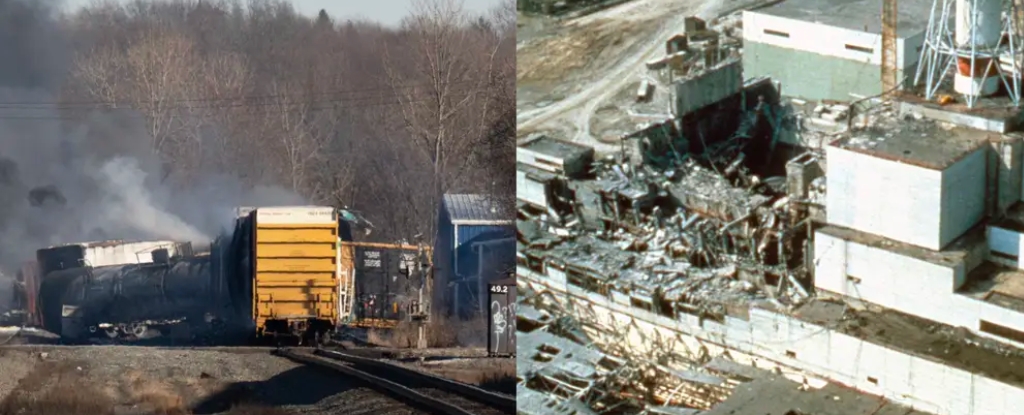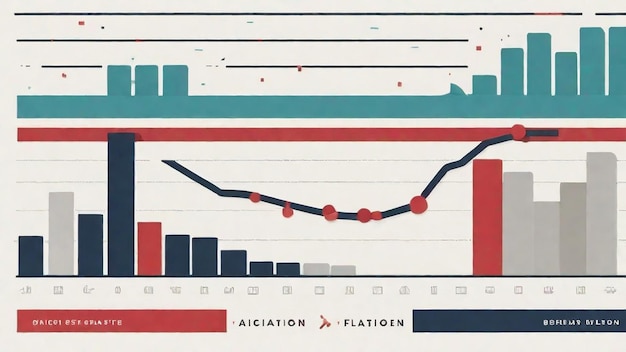Ohio Train Disaster: Lingering Toxic Chemical Contamination In Buildings

Table of Contents
Extent of the Contamination
The geographical spread of contamination from the Ohio train derailment extends far beyond the immediate vicinity of the accident. The toxic plume impacted a wide area, affecting residential homes, commercial properties, and even schools located near the derailment site. This widespread contamination demands a comprehensive assessment to fully understand the long-term implications.
- Soil contamination: Numerous soil samples taken near affected buildings have shown elevated levels of hazardous substances, indicating a significant risk of ground water contamination.
- Air quality concerns: Air quality testing in the surrounding areas has revealed higher-than-normal levels of toxic chemicals, raising concerns about long-term respiratory health impacts for residents.
- Water contamination reports: There are reports of contaminated water sources impacting nearby structures, further compounding the environmental and health hazards.
- Visible damage: In some cases, visual evidence of damage to building materials—including discoloration and structural weakening—suggests the extent of the chemical exposure and the urgent need for remediation.
Health Risks Associated with the Contamination
Exposure to the chemicals released during the Ohio train derailment, including vinyl chloride and butyl acrylate, carries significant health risks. These chemicals are known carcinogens, and exposure can lead to a range of short-term and long-term health problems.
- Short-term effects: Respiratory problems, such as coughing, wheezing, and shortness of breath, are common. Skin irritation and eye irritation are also reported.
- Long-term effects: The long-term health consequences are more serious and include an increased risk of various cancers, reproductive issues, neurological damage, and other chronic health conditions. Further research is needed to fully assess the long-term impacts on the health of exposed individuals. Studies on similar incidents show a clear link between exposure to vinyl chloride and an increased risk of liver cancer, brain cancer, and leukemia.
Cleanup and Remediation Efforts: Progress and Challenges
Cleanup and remediation efforts are underway, but the effectiveness and pace of these actions are subjects of ongoing debate and concern. The scale of the contamination and the complexity of the remediation process present significant challenges.
- Soil and water decontamination: Various methods are employed to decontaminate soil and water, including excavation, bioremediation, and advanced oxidation processes. The efficacy of these methods in addressing the widespread contamination remains to be fully determined.
- Building remediation techniques: Building remediation involves a range of approaches, including decontamination, repairs, and in some cases, complete demolition. The decision on the most appropriate course of action is often complex and depends on the level and type of contamination.
- Monitoring and testing: Ongoing monitoring and testing are crucial to assess the effectiveness of the cleanup and ensure that the remediation efforts are successful in mitigating the long-term risks. This process requires rigorous protocols and transparent reporting.
- Governmental oversight: The role of government agencies in overseeing the cleanup process and enforcing regulations is vital to ensure that remediation efforts are comprehensive and meet safety standards. However, concerns remain regarding the speed and thoroughness of governmental action.
Lack of Transparency and Public Concerns
Public concerns about transparency from authorities and responsible parties are widespread. Discrepancies in information about the extent of contamination and the progress of the cleanup have fueled distrust and increased public anxiety. Public health advocacy groups are playing a crucial role in demanding more transparency and pushing for increased accountability.
Long-Term Impacts and Future Considerations
The Ohio train derailment's long-term environmental and health consequences could be far-reaching. Ongoing monitoring and comprehensive support for affected residents are critical for addressing these potential impacts.
- Long-term health monitoring: Establishing a robust, long-term health monitoring program for individuals exposed to the released chemicals is paramount to understanding and addressing the lasting health effects.
- Economic impact: The economic burden on affected communities, including lost property value and healthcare costs, needs to be carefully assessed and addressed.
- Environmental impact assessment: A thorough environmental impact assessment is needed to fully understand the long-term effects on the local ecosystem and natural resources.
- Legal ramifications: The legal ramifications of the disaster, including potential lawsuits against responsible parties, are likely to play out over many years.
Conclusion
The Ohio train disaster toxic contamination presents a serious and ongoing threat to the health and well-being of residents in the affected area. The lingering presence of hazardous chemicals in buildings necessitates continued monitoring, comprehensive remediation efforts, and increased transparency from responsible parties. The severity of the situation demands a proactive and transparent approach to ensuring the safety and well-being of affected communities. We must prioritize the health and safety of those impacted by the Ohio train derailment cleanup and work towards preventing similar incidents in the future. Continued vigilance, robust monitoring for toxic chemical contamination effects, and advocacy for stricter regulations regarding the transportation of hazardous materials are crucial to mitigate the long-term risks associated with the Ohio train disaster health risks. Stay informed, support affected communities, and demand accountability from those responsible.

Featured Posts
-
 Ariana Grandes Style Evolution Hair Tattoos And The Importance Of Professional Care
Apr 27, 2025
Ariana Grandes Style Evolution Hair Tattoos And The Importance Of Professional Care
Apr 27, 2025 -
 Us Economy Feels The Pinch Analyzing The Impact Of The Canadian Travel Boycott
Apr 27, 2025
Us Economy Feels The Pinch Analyzing The Impact Of The Canadian Travel Boycott
Apr 27, 2025 -
 Free Kanopy Movies And Shows Your Guide To Hidden Gems
Apr 27, 2025
Free Kanopy Movies And Shows Your Guide To Hidden Gems
Apr 27, 2025 -
 Nosferatu The Vampyre A Now Toronto Detour Worth Taking
Apr 27, 2025
Nosferatu The Vampyre A Now Toronto Detour Worth Taking
Apr 27, 2025 -
 Ariana Grandes Music Video The Surprising White Lotus Cameo By Patrick Schwarzenegger
Apr 27, 2025
Ariana Grandes Music Video The Surprising White Lotus Cameo By Patrick Schwarzenegger
Apr 27, 2025
Latest Posts
-
 Ftcs Appeal Challenges Microsofts Activision Blizzard Acquisition
Apr 28, 2025
Ftcs Appeal Challenges Microsofts Activision Blizzard Acquisition
Apr 28, 2025 -
 Future Of Microsoft Activision Merger Uncertain After Ftc Appeal
Apr 28, 2025
Future Of Microsoft Activision Merger Uncertain After Ftc Appeal
Apr 28, 2025 -
 Microsoft Activision Deal Ftcs Appeal And What It Means
Apr 28, 2025
Microsoft Activision Deal Ftcs Appeal And What It Means
Apr 28, 2025 -
 Ftc Appeals Activision Blizzard Acquisition Microsoft Deal In Jeopardy
Apr 28, 2025
Ftc Appeals Activision Blizzard Acquisition Microsoft Deal In Jeopardy
Apr 28, 2025 -
 Ray Epps Sues Fox News For Defamation January 6th Falsehoods At The Center Of The Case
Apr 28, 2025
Ray Epps Sues Fox News For Defamation January 6th Falsehoods At The Center Of The Case
Apr 28, 2025
